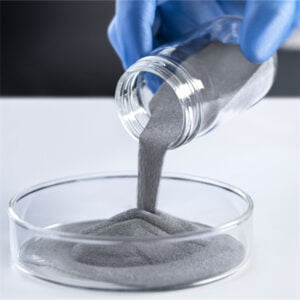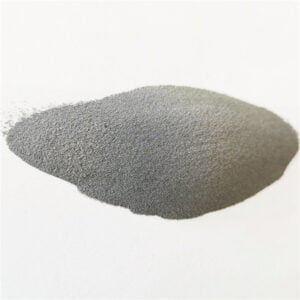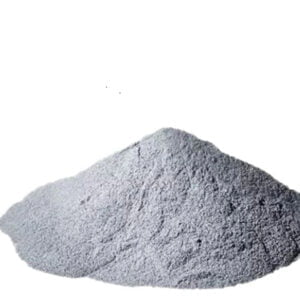3D-utskriftsmetaller för ortopediska implantat Tillämpning
Innehållsförteckning
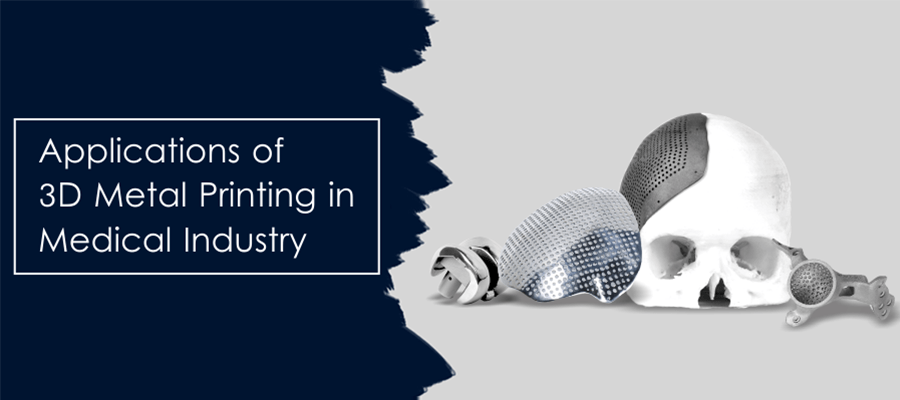
3D-utskriftsmetaller för ortopediska implantat Tillämpning Inledning
3D-printing har revolutionerat många branscher, och det medicinska området är inget undantag. Inom ortopedin har 3D-utskrifter öppnat upp nya möjligheter för att skapa skräddarsydda implantat som ger en mer exakt passform och bättre patientresultat. Det här blogginlägget handlar om användningen av 3D-utskriftsmetaller för ortopediska implantat. Vi kommer att diskutera det aktuella läget i branschen, den senaste utvecklingen, vanligt förekommande metallpulver och leverantörsinformation.
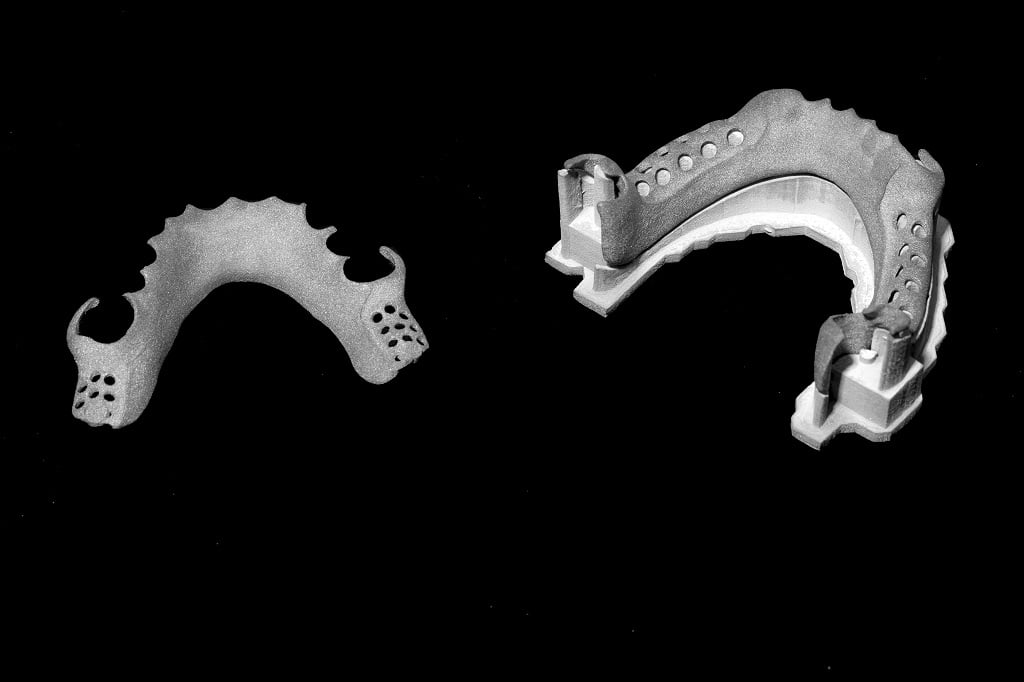
Det aktuella läget för 3D-utskrift av metaller för ortopediska implantat
Användningen av 3D-printade metallimplantat inom ortopedi är ett snabbt växande område. År 2020 värderades den globala marknaden för 3D-printade ortopediska implantat till $1,2 miljarder, och den beräknas uppgå till $4,5 miljarder år 2028. Denna tillväxt drivs av ett antal faktorer, bland annat:
- Den ökande efterfrågan på individanpassade implantat: Traditionella implantat är ofta standardprodukter som inte passar perfekt till patientens anatomi. Detta kan leda till komplikationer som att implantatet lossnar, smärta och infektion. 3D-utskrivna implantat kan anpassas till patientens specifika behov, vilket kan förbättra passformen och minska risken för komplikationer.
- Den ökande tillgången till 3D-utskriftsteknik: 3D-printingtekniken har blivit billigare och mer lättillgänglig under de senaste åren. Detta har gjort det möjligt för fler sjukhus och medicintekniska företag att använda tekniken för tillverkning av implantat.
- Det ökande antalet kliniska prövningar: Det finns en växande mängd kliniska bevis som stöder användningen av 3D-printade metallimplantat inom ortopedin. Kliniska prövningar har visat att 3D-printade implantat kan ge bättre resultat än traditionella implantat när det gäller patientnöjdhet, implantatets livslängd och minskad risk för komplikationer.
Senaste utvecklingen inom 3D-printade metallimplantat
Det finns ett antal nya utvecklingar inom området 3D-printade metallimplantat. Några av de mest anmärkningsvärda utvecklingarna inkluderar:
- Utveckling av ny teknik för 3D-utskrifter: Nya 3D-printingtekniker utvecklas som ger förbättrad noggrannhet, hastighet och materialegenskaper. Detta leder till utvecklingen av nya och förbättrade 3D-printade implantat.
- Utveckling av nya biomaterial: Nya biomaterial utvecklas som är särskilt utformade för 3D-utskrifter. Dessa biomaterial erbjuder förbättrad biokompatibilitet, osseointegration och hållbarhet.
- Utveckling av ny programvara och nya konstruktionsverktyg: Nya programvaror och konstruktionsverktyg utvecklas som gör det enklare att konstruera och tillverka 3D-utskrivna implantat. Dessa verktyg bidrar till att förbättra precisionen och effektiviteten i 3D-utskriftsprocessen.
Vanliga metallpulver för 3D-utskrivna implantat
De vanligaste metallpulvren för 3D-utskrivna implantat är
- Titanlegeringar: Titanlegeringar är de vanligaste metallpulvren för 3D-utskrivna implantat på grund av deras utmärkta biokompatibilitet, styrka och korrosionsbeständighet. Några vanliga titanlegeringspulver är Ti6Al4V, Ti5Al2.5Sn och Ti6Al7Nb.
- Kobolt-kromlegeringar: Kobolt-kromlegeringar är ett annat vanligt förekommande metallpulver för 3D-utskrivna implantat. De erbjuder hög hållfasthet, slitstyrka och korrosionsbeständighet. Några vanliga pulver av kobolt-kromlegeringar är CoCrMo och CoCrWNi.
- Rostfritt stål: Rostfritt stål är ett kostnadseffektivt alternativ för 3D-utskrivna implantat. Det erbjuder god biokompatibilitet, styrka och korrosionsbeständighet. Några vanliga pulver av rostfritt stål är 316L och 22Cr13Ni5Mo.
-
 Ti45Nb-pulver för additiv tillverkning
Ti45Nb-pulver för additiv tillverkning -
 Pulver av TiNb-legering
Pulver av TiNb-legering -
 Pulver av TiNbZrSn-legering
Pulver av TiNbZrSn-legering -
 Ti6Al4V Pulver Titanbaserat metallpulver för additiv tillverkning
Ti6Al4V Pulver Titanbaserat metallpulver för additiv tillverkning -
 CPTi Pulver
CPTi Pulver -
 TC18 Pulver : Frigör kraften hos titankarbid
TC18 Pulver : Frigör kraften hos titankarbid -
 TC11 Pulver : En omfattande guide
TC11 Pulver : En omfattande guide -
 TC4 ELI Pulver
TC4 ELI Pulver -
 Bästa Ti-6Al-4V-pulver (TC4-pulver) för additiv tillverkning
Bästa Ti-6Al-4V-pulver (TC4-pulver) för additiv tillverkning
Leverantörer av metallpulver för 3D-utskrivna implantat
Det finns ett antal leverantörer av metallpulver för 3D-utskrivna implantat. Några av de mest anmärkningsvärda leverantörerna inkluderar:
- MET3DP: Met3DP tillverkar ett brett sortiment av högkvalitativa metallpulver som är optimerade för laser- och elektronstrålepulverbäddsfusion. I portföljen ingår innovativa legeringar som TiNi, TiTa, TiAl, TiNbZr, CoCrMo, rostfritt stål, superlegeringar med mera.
- Arcam: Arcam är en ledande leverantör av pulver av titanlegeringar för 3D-printing.
- Materion: Materion är en ledande leverantör av metallpulver för 3D-printing, inklusive titanlegeringar, kobolt-kromlegeringar och rostfritt stål.
- Höganäs: Höganäs är en ledande leverantör av metallpulver för 3D-printing, inklusive rostfritt stål.
- LPW Technology: LPW Technology är en ledande leverantör av metallpulver för 3D-printing, inklusive titanlegeringar och kobolt-kromlegeringar.
Fördelar med 3D-utskrivna metallimplantat
3D-utskrivna metallimplantat erbjuder ett antal fördelar jämfört med traditionella implantat, bland annat
- Förbättrad passform och precision: 3D-utskrivna implantat kan anpassas till patientens specifika anatomi, vilket kan förbättra passformen och minska risken för komplikationer.
- Minskad risk för infektioner: 3D-utskrivna implantat kan tillverkas i en steril miljö, vilket kan minska infektionsrisken.
- Snabbare läkningstid: 3D-utskrivna implantat kan främja bentillväxt och läkning, vilket kan leda till snabbare läkningstider.
- Minskad kostnad: 3D-utskrivna implantat kan tillverkas mer kostnadseffektivt än traditionella implantat, vilket kan göra dem mer prisvärda för patienterna.
Fallstudier
Det finns ett antal fallstudier som visar på fördelarna med 3D-printade metallimplantat inom ortopedi. En studie som publicerades i tidskriften Naturmedicin rapporterade att 3D-utskrivna implantat av titanlegering användes för att framgångsrikt behandla patienter med svåra ryggradsdeformiteter. Implantaten anpassades till patienternas specifika anatomi och kunde korrigera deformiteterna utan behov av större kirurgi.
En annan studie, publicerad i tidskriften The Lancet, rapporterade att 3D-printade implantat av kobolt-kromlegering använts för att framgångsrikt behandla patienter med höftfrakturer. Implantaten kunde återställa patienternas rörlighet och livskvalitet.
Slutsats
3D-printing är en snabbt växande teknik som har potential att revolutionera det medicinska området. Inom ortopedin erbjuder 3D-printade metallimplantat ett antal fördelar jämfört med traditionella implantat, bland annat bättre passform och precision, minskad infektionsrisk, snabbare läkningstid och lägre kostnad. I takt med att tekniken fortsätter att utvecklas förväntas 3D-printade metallimplantat spela en allt viktigare roll vid behandling av ortopediska tillstånd.
Referenser
- 3D-utskrift av metaller för biomedicinska tillämpningar: https://www.ncbi.nlm.nih.gov/pmc/articles/PMC7061633/
- 3D-utskrift av metallimplantat inom ortopedisk kirurgi: Metoder, tillämpningar och framtidsutsikter: https://www.ncbi.nlm.nih.gov/pmc/articles/PMC10480061/
- Nya framsteg inom 3D-utskrift av biologiskt nedbrytbara metaller för ortopediska tillämpningar: https://pubmed.ncbi.nlm.nih.gov/37644461/
Dela på
MET3DP Technology Co, LTD är en ledande leverantör av lösningar för additiv tillverkning med huvudkontor i Qingdao, Kina. Vårt företag är specialiserat på 3D-utskriftsutrustning och högpresterande metallpulver för industriella tillämpningar.
Förfrågan för att få bästa pris och anpassad lösning för ditt företag!
Relaterade artiklar

Högpresterande segment för munstycksvingar: Revolutionerande turbineffektivitet med 3D-utskrift i metall
Läs mer "Om Met3DP
Senaste uppdateringen
Vår produkt
KONTAKTA OSS
Har du några frågor? Skicka oss meddelande nu! Vi kommer att betjäna din begäran med ett helt team efter att ha fått ditt meddelande.

Metallpulver för 3D-printing och additiv tillverkning
FÖRETAG
PRODUKT
cONTACT INFO
- Qingdao City, Shandong, Kina
- [email protected]
- [email protected]
- +86 19116340731









